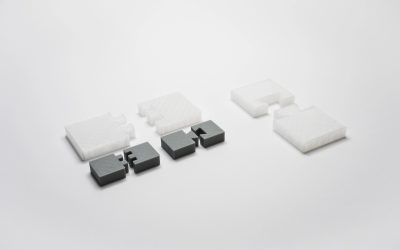What materials have the best repeatability?
Seeking consistency and predictability in your parts? Check out our guide on repeatability, which highlights the materials that will perform the same way time and time again.
Read articleLearn how to design and 3D print interlocking joints (e.g. finger-, dovetail- and puzzle joints) to assemble your 3D printed parts.

Interlocking joints are a common method for connecting components that are regularly assembled and disassembled. The use of interlocking joints allows:
This article will discuss the common applications of interlocking connections used in 3D printing, and recommend the 3D printing processes most suited to interlocking joint production.
The table below provides a quick overview of the most common 3D printing technologies and whether they are appropriate for printing interlocking joints:
| Process | Description |
|---|---|
| FDM | Low cost and effective way of manufacturing interlocking joints but lower accuracy than other printing methods. ABS better suited than PLA due to its improved ductility |
| SLA | High accuracy but can be very brittle unless using a “tough resin” |
| SLS | Good for interlocking parts as parts have high print accuracy and good strength |
| Material Jetting | Good strength and elasticity combined with high resolution details makes material jetting ideal for interlocking applications |
| Binder Jetting | Not suited for interlocking connections |
There are 3 forces to consider when designing interlocking joints:
Friction - the critical force that holds the joint together. The tighter the joint is, the higher the friction and the more difficult it will be to pull apart
Tension - the force that acts to pull the joint apart

Shear - the force perpendicular to tension that pulls the joint sideways (a tearing force)

When interlocking joints are manufactured in injection molding, a tolerance of 0.1mm is applied. For 3D printing, tolerances vary between technologies as summarized in the table below.
| Process | Interlocking parts tolerances |
|---|---|
| FDM | 0.5 mm |
| SLA | 0.2 mm |
| SLS | 0.2 mm |
| Material Jetting | 0.1 mm |